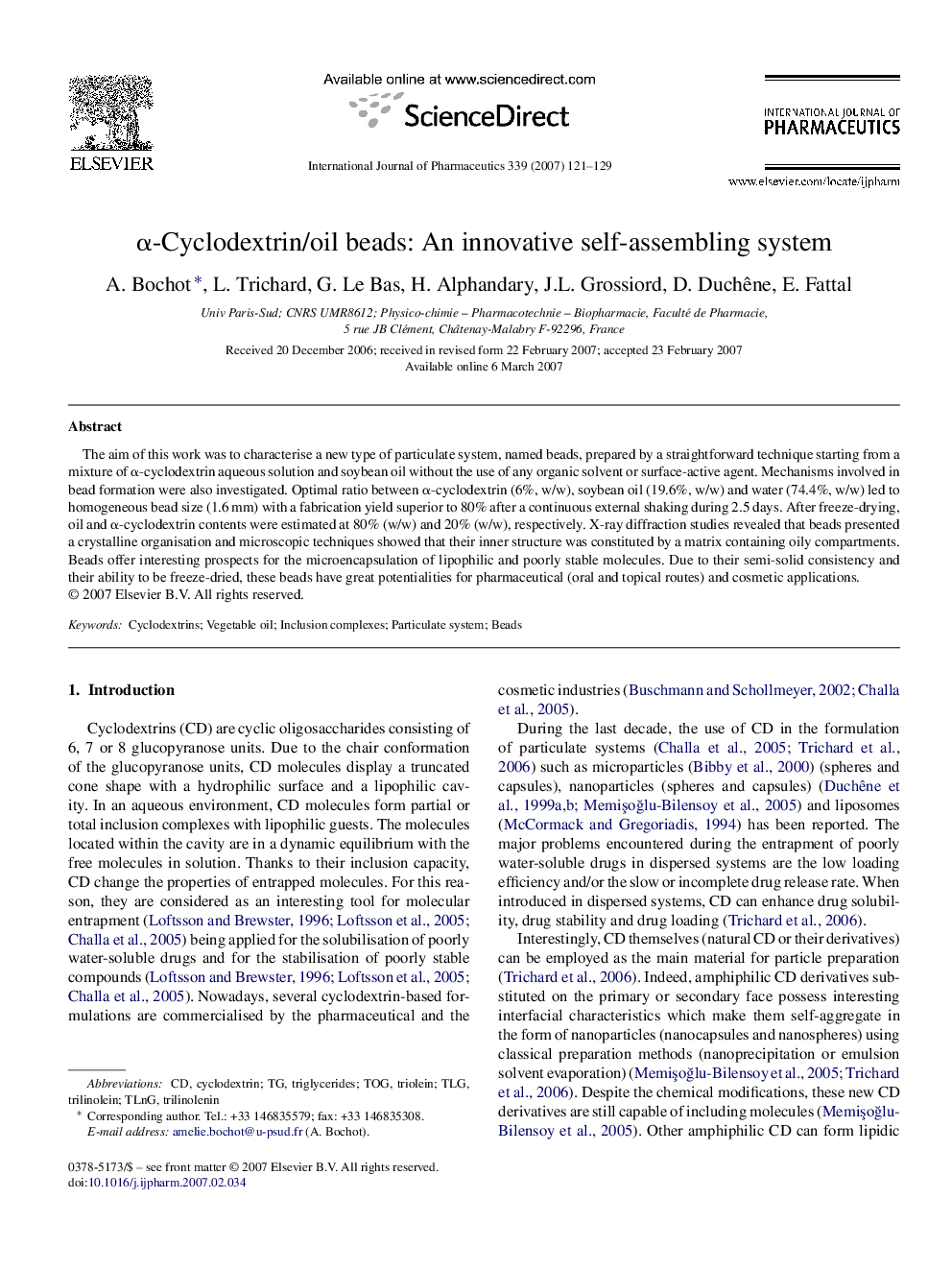| Article ID | Journal | Published Year | Pages | File Type |
|---|---|---|---|---|
| 2506091 | International Journal of Pharmaceutics | 2007 | 9 Pages |
The aim of this work was to characterise a new type of particulate system, named beads, prepared by a straightforward technique starting from a mixture of α-cyclodextrin aqueous solution and soybean oil without the use of any organic solvent or surface-active agent. Mechanisms involved in bead formation were also investigated. Optimal ratio between α-cyclodextrin (6%, w/w), soybean oil (19.6%, w/w) and water (74.4%, w/w) led to homogeneous bead size (1.6 mm) with a fabrication yield superior to 80% after a continuous external shaking during 2.5 days. After freeze-drying, oil and α-cyclodextrin contents were estimated at 80% (w/w) and 20% (w/w), respectively. X-ray diffraction studies revealed that beads presented a crystalline organisation and microscopic techniques showed that their inner structure was constituted by a matrix containing oily compartments. Beads offer interesting prospects for the microencapsulation of lipophilic and poorly stable molecules. Due to their semi-solid consistency and their ability to be freeze-dried, these beads have great potentialities for pharmaceutical (oral and topical routes) and cosmetic applications.
